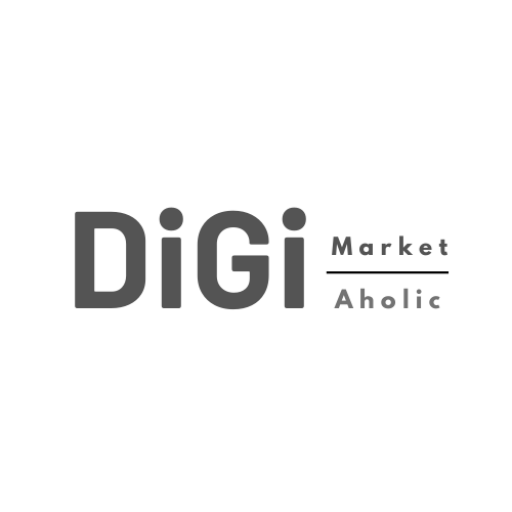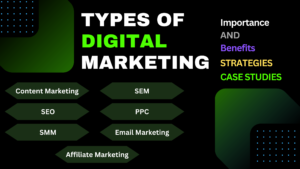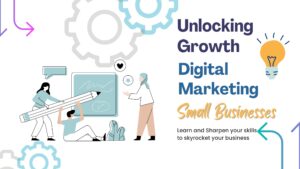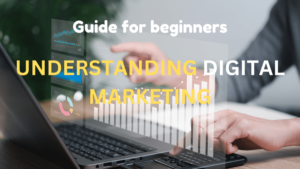Discover the key differences and advantages of understanding digital and traditional marketing in our comprehensive guide. Learn how to balance both approaches for a successful strategy.
Explore examples of case studies to enhance your understanding and application of these marketing techniques. Perfect for beginners and seasoned marketers alike.
Introduction to Digital and Traditional Marketing
What is Marketing?
Marketing is the process of promoting products or services to potential customers. It encompasses a wide range of activities, including advertising, sales, and market research, aimed at understanding and meeting the needs of consumers.
The Evolution of Marketing: From Traditional to Digital
Marketing has evolved significantly over the years. Traditionally, businesses relied on methods such as print, TV, and radio advertising to reach their audiences. However, with the advent of the internet, digital marketing has become a dominant force, leveraging online platforms to connect with consumers.
Importance of Understanding Both Marketing Approaches
In today’s competitive landscape, it’s crucial for businesses to understand both digital and traditional marketing. Each approach has its strengths and weaknesses, and a balanced strategy can help maximize reach and impact.
Defining Traditional Marketing
Overview of Traditional Marketing
Traditional marketing refers to the conventional methods of advertising that have been used for decades. These include print ads, TV commercials, radio spots, direct mail, and outdoor billboards.
Examples of Traditional Marketing
- Print Advertising: Newspapers, magazines, brochures
- Television Advertising: Commercials on local or national TV
- Radio Advertising: Ads played on radio stations
- Direct Mail: Flyers, catalogs, and postcards sent to homes
- Outdoor Advertising: Billboards, transit ads
Benefits of Traditional Marketing
Traditional marketing offers several advantages:
- Established Trust and Credibility: Consumers often trust traditional media more than digital ads.
- Tangibility and Physical Presence: Physical ads can leave a lasting impression.
- Broad Audience Reach: Traditional media can reach a wide audience, especially locally.
- Longevity and Lasting Impressions: Print ads and billboards can have a long shelf life.
Limitations of Traditional Marketing
However, traditional marketing also has its drawbacks:
- High Costs: TV and print ads can be expensive.
- Limited Targeting: Broad reach can mean less precise audience targeting.
- Difficulty Measuring ROI: Tracking the effectiveness of traditional ads can be challenging.
- Passive Engagement: Consumers are passive recipients of the message.
Defining Digital Marketing
Overview of Digital Marketing
Digital marketing involves promoting products or services through online platforms. It includes a variety of tactics such as search engine optimization (SEO), pay-per-click (PPC) advertising, social media marketing, email marketing, and content marketing.
Examples of Digital Marketing
- SEO: Optimizing website content to rank higher in search engine results.
- PPC: Online ads that charge based on clicks.
- Social Media Marketing: Promoting on platforms like Facebook, Instagram, and Twitter.
- Email Marketing: Sending targeted emails to potential customers.
- Content Marketing: Creating valuable content to attract and engage an audience.
Benefits of Digital Marketing
Digital marketing offers numerous benefits:
- Cost-Effectiveness and Flexibility: Online ads can be cheaper and more flexible than traditional ads.
- Precise Targeting and Personalization: Target specific demographics with tailored messages.
- Real-Time Analytics and Adjustments: Track and adjust campaigns in real-time.
- Enhanced Engagement and Interactivity: Directly engage with consumers through interactive content.
- Scalability and Global Reach: Easily scale campaigns and reach a global audience.
Limitations of Digital Marketing
Despite its advantages, digital marketing also has limitations:
- Digital Ad Fatigue: Consumers can become overwhelmed by too many online ads.
- Privacy Concerns: Issues with data privacy can affect consumer trust.
- Rapid Changes in Technology: Keeping up with the latest trends and technologies can be challenging.
Key Differences Between Digital and Traditional Marketing
Reach and Audience Targeting
- Mass Marketing vs. Targeted Marketing: Traditional marketing often targets a broad audience, while digital marketing allows for more precise targeting.
- Local vs. Global Reach: Traditional marketing is typically local, whereas digital marketing can reach a global audience.
Cost and ROI
- Budget Considerations: Traditional marketing can be expensive, while digital marketing is often more budget-friendly.
- Measuring Return on Investment: Digital marketing allows for easier and more accurate ROI measurement through analytics.
Interactivity and Engagement
- Passive vs. Active Engagement: Traditional marketing involves passive engagement, while digital marketing encourages active consumer participation.
- Real-Time Interaction: Digital platforms enable real-time interaction with consumers.
Data and Analytics
- Tracking and Measuring Success: Digital marketing provides detailed analytics to track campaign success.
- Data-Driven Decisions: Digital marketing allows for data-driven strategies and adjustments.
Content and Delivery
- Types of Content: Traditional marketing uses static content like print ads, while digital marketing utilizes dynamic content like videos and social media posts.
- Delivery Methods and Platforms: Traditional ads are delivered through physical media, while digital ads are delivered online.
Advantages of Traditional Marketing
Established Trust and Credibility
Traditional marketing often enjoys higher credibility among consumers, as established media sources are trusted more than online ads.
Tangibility and Physical Presence
Physical ads, such as brochures and billboards, provide a tangible presence that can be impactful.
Broad Audience Reach
Traditional media can reach a wide audience, making it effective for local and regional campaigns.
Longevity and Lasting Impressions
Print ads and billboards can have a longer shelf life, continuing to promote long after the initial investment.
Advantages of Digital Marketing
Cost-Effectiveness and Flexibility
Digital marketing campaigns can be more cost-effective and easily adjusted to fit changing needs and budgets.
Precise Targeting and Personalization
Online platforms allow for precise targeting based on demographics, interests, and behaviors, leading to more personalized marketing efforts.
Real-Time Analytics and Adjustments
Digital campaigns can be monitored and adjusted in real-time based on performance data.
Enhanced Engagement and Interactivity
Digital marketing encourages active consumer engagement through interactive content and direct communication channels.
Scalability and Global Reach
Digital marketing can easily be scaled to reach a global audience, offering significant growth potential.
Integrating Digital and Traditional Marketing
Importance of a Multi-Channel Strategy
A multi-channel strategy that integrates both digital and traditional marketing can provide a comprehensive approach, maximizing reach and impact.
Examples of Integrated Marketing Campaigns
Successful integrated campaigns leverage the strengths of both approaches, such as combining print ads with social media promotions.
Tips for Successfully Combining Both Approaches
- Consistent Messaging: Ensure consistency across all channels.
- Leverage Data: Use data from digital campaigns to inform traditional strategies.
- Unified Brand Experience: Create a seamless brand experience across all touchpoints.
Case Studies Examples
Successful Traditional Marketing Campaigns
- Example: Coca-Cola’s “Share a Coke”: Personalized labels on bottles increased consumer engagement and sales.
Successful Digital Marketing Campaigns
- Example: Nike’s “Just Do It” on Social Media: Leveraged influencers and user-generated content to drive brand loyalty and sales.
Integrated Marketing Campaigns
- Example: Old Spice’s “The Man Your Man Could Smell Like”: Combined TV commercials with a strong social media presence, leading to significant brand awareness and sales growth.
Future Trends in Marketing
The Shift Towards Digital Dominance
The trend towards digital marketing is expected to continue, with increasing investment in online platforms.
Emerging Technologies and Their Impact
Technologies such as artificial intelligence, augmented reality, and voice search are shaping the future of marketing.
Predictions for the Future of Marketing
- Increased Personalization: Greater emphasis on personalized marketing.
- Data Privacy: Enhanced focus on data privacy and consumer trust.
- Omni-Channel Marketing: Integrated marketing strategies will become more prevalent.
Conclusion
Recap of Key Differences and Advantages
Understanding the key differences and advantages of digital and traditional marketing is essential for developing a balanced and effective strategy.
The Importance of a Balanced Marketing Strategy
A balanced approach that leverages the strengths of both digital and traditional marketing can maximize reach, engagement, and ROI.
Encouragement to Explore and Adapt Marketing Approaches
Businesses should continually explore and adapt their marketing approaches to stay competitive and meet the evolving needs of their audiences.




